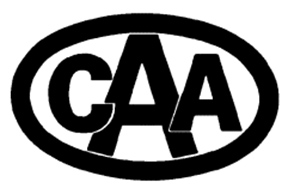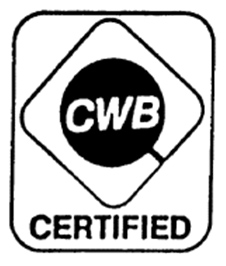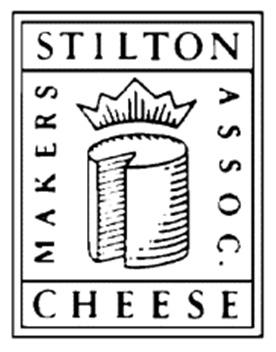Under Canada’s Trademarks Act (the “Act”), a “trademark” may be defined as one of four things:
- a mark used by a person to distinguish his or her goods or services from those of others;
- a certification mark;
- a distinguishing guise; or
- a proposed trademark.
A certification mark is a special mark used to identify goods or services that are of a defined standard with respect to:
- the character or quality of the goods or services;
- the conditions under which the goods have been produced or the services performed;
- the class of persons by whom the goods have been produced or the services performed; or
- the area within which the goods have been produced or the services performed.
The owner of a certification mark is responsible for establishing the defined standard indicated by the mark. The owner may adopt the mark and register it with the Canadian Trademarks Office so long as it does not itself manufacture, sell, lease or hire the goods, or perform the services, in association with which the certification mark is to be used.
Rather, the Act provides for a licensing scheme under which the owner of the certification mark may license others to use the mark in association with their own goods or services, so long as those goods or services meet the owner’s defined standard. In this way, the licensees’ own use of the certification mark in association with their goods and services accrues to the owner, such that the owner may be said to be “using” the mark under the Act and the registration of the mark cannot be attacked for “non-use.”
The owner then becomes the “gatekeeper” of the certification mark and may prevent its use by persons to whom the owner has not licensed the mark or who use the mark inaccurately or incorrectly (e.g. by applying the mark to goods or services that do not meet the owner’s defined standard or that are not contemplated in the license agreement).
Below are just a few examples of certification marks.

CUMMINS & DESIGN
Registration No. TMA279,246
Cummins Inc.

CAA DESIGN
Registration No. TMA334,344
Canadian Automobile Association
TOASTMASTERS INTERNATIONAL
Registration No. TMA351,538
Toastmasters International

CWB CERTIFIED & DESIGN
Registration No. TMA411,765
Canadian Welding Bureau

STILTON CHEESE MAKERS ASSOC. & DESIGN
Registration No. TMA513,746
The Stilton Cheese Makers Association

WI-FI & Design
Registration No. TMA568,909
Wi-Fi Alliance
In certain circumstances, a licensee may use and ultimately register a trademark that is deemed confusing with the licensor’s certification mark, so as to indicate to consumers that the goods or services in association with which the trademark is used have been manufactured, sold, leased, hired or performed by a person entitled to use the certification mark. However, a licensee may do so only (a) with the consent of the owner of the certification mark, and (b) if the trademark in question exhibits an “appropriate difference” from the certification mark. A licensee may not register the exact same certification mark that it is licensed to use; the applied-for trademark must exhibit an “appropriate difference.” To date, Canada’s courts have yet to provide any guidance as to what exactly constitutes an “appropriate difference,” but it suffices to say that the difference must be such that the applied-for trademark is neither exactly the same as the certification mark that the applicant is licensed to use nor so different as to not be deemed confusing in the first place.
Indeed, the “appropriate difference” must be insufficient to distinguish the two marks but sufficient to avoid any claims of identicalness — hence the reason that the Act requires the applicant to obtain the owner’s consent before the confusing trademark will proceed to registration. This way, the owner has the opportunity to review the applied-for trademark to ensure that it does not depreciate the value of the goodwill attaching to the certification mark, diminish its inherent distinctiveness, or otherwise tarnish the owner’s image or that of its defined standard. If the owner of the certification mark concludes that the applied-for trademark is more or less harmless to its business and its image, then it may consent to the registration of the licensee’s confusing trademark. A trademark lawyer can help an applicant obtain the consent of the owner of a certification mark and defend the application along the way to registration.
If the licensee’s trademark application proceeds to registration, the registration itself will remain valid so long as (a) the licensee uses the applied-for trademark in the normal course of trade, (b) the owner of the certification mark does not withdraw its consent (which it may do at any time), and (c) the registration of the certification mark with which the trademark is deemed confusing remains valid as well.
As noted above, a certification mark may be used to indicate the area within which goods have been produced or services performed. To this end, the Act prescribes who may apply for such a certification mark and who must be permitted to use it.
Under the Act, only two types of applicants may register a certification mark that indicates the area within which certain goods have been produced or certain services performed: either “the administrative authority of a country, state, province or municipality” that includes or forms part of the area indicated by the mark, or “a commercial association having an office or representative in that area.” Thus, an individual person may not register a certification mark that indicates the area within which certain goods have been produced or certain services performed. Interestingly, the wording of the Act is such that a municipality, like Toronto, may register a certification mark describing Ontario as the province within which certain goods are produced or certain services performed, and a province, like Ontario, may in turn register a certification mark describing Canada as the country within which certain goods are produced or certain services performed; so long as the applicant in question is either the “administrative authority” of the place “including or forming part of the area indicated by the mark,” or a “commercial association having an office or representative in that area,” it may register, and thus become the owner of, the certification mark.
Thankfully for those who do not own such marks, the same provision that prescribes who may apply for a certification mark that indicates the area within which goods have been produced or services performed also sets out who must be permitted to use it. Whoever produces the associated goods or performs the associated services in the relevant area must be permitted by the owner of the mark to use the mark in association with such goods or services. This way, an owner cannot hold hostage, or prevent others’ use of, a certification mark that third parties may be qualified to use in association with their own goods and services.
Canada’s international treaty obligations require that the Act contain a separate yet similar system to protect traders in Canada and around the world who wish to use a “geographical indication” in association with a wine or spirit. Like a certification mark that indicates the area within which certain goods have been produced, a “geographical indication” is a protected mark that is restricted in its application and use to only those wines or spirits that actually originate from the relevant geographical area (like “Beaujolais,” “Bordeaux,” “Chianti” or “Cognac”). Unlike a certification mark, however, a geographical indication does not describe anything other than the geographical area itself; whereas a certification mark may be used to distinguish goods or services that are of a defined standard with respect to their character or quality, the conditions under which they have been produced or performed, the class of persons by whom they have been produced or performed, or the area within which they have been produced or performed, a geographical indication – true to its name – indicates only the geographical area from which the wine or spirit originates and may not be adopted or used in connection with a business, as a trademark or otherwise, unless it is so adopted or used in association with a wine or spirit from the relevant geographical area.
Moreover, a “geographical indication” may be applied for only by a “responsible authority,” which the Act defines as a person, firm or other entity that is, by reason of state or commercial interest, sufficiently connected with and knowledgeable of the relevant wine or spirit to defend the application for the associated “geographical indication.” By contrast, any person may apply for a certification mark (unless, of course, that certification mark indicates the area within which certain goods have been produced or certain services performed), establish the defined standard, and license the use of the mark to third parties who, in the opinion of the owner of the mark, are qualified to use it in association with their goods or services.
When applying to register such a certification mark, the applicant must define the standard that the use of the mark is to indicate and file a written statement that the applicant does not manufacture, sell, lease or hire the goods, or perform the services, in association with which the certification mark is to be used. Once the Registrar has registered the certification mark, the owner thereof may apply to the Trademarks Office at any time to amend the particulars of the defined standard, so long as it remains disengaged from such manufacture, sale, leasing, hiring or performance.
In summary, a certification mark allows traders to distinguish goods or services that are of a defined standard with respect to their character or quality, the conditions under which they have been produced or performed, the class of persons by whom they have been produced or performed, or the area within which they have been produced or performed, and they may be useful for traders who have a vested interest in producing consistent, quality goods or performing dependable and repeatable services. Indeed, certification marks are an efficient way to distinguish the superior craftsmanship or quality of traders’ goods and services from those of competitors and are often applied for by industry associations and trade groups who then license the mark to their members for this very purpose. The peculiarities of Canada’s certification mark regime and the Act’s licensing scheme are best navigated with the help of a trademark lawyer, who can assist in selecting a certification mark, defining the standard that the use of the mark is to indicate, preparing an application therefor, defending the application before the Trademarks Office, licensing the mark to third parties, and protecting the certification mark from misappropriation and misuse.
The preceding is intended as a timely update on Canadian intellectual property and technology law. The content is informational only and does not constitute legal or professional advice. To obtain such advice, please communicate with our offices directly.
Related Publications & Articles
-
A decision to watch: Groupe Swatch v Office québécois de la langue française
On October 27, 2025, the Tribunal administratif du Québec rendered a decision setting aside an order of the Office québécois de la langue française ordering Groupe Swatch to add a “sufficient presence...Read More -
Strategic considerations: Canadian post-grant patent administrative procedures
The Canadian patent system provides multiple post-grant administrative procedures that allow both patentees and third parties to revisit the scope or validity of a patent without going to court.Read More -
Moral rights and contractual gaps: the case of a hidden mural
The decision in Bachand c Mural underscores the importance of considering moral rights when commissioning public art.Read More
